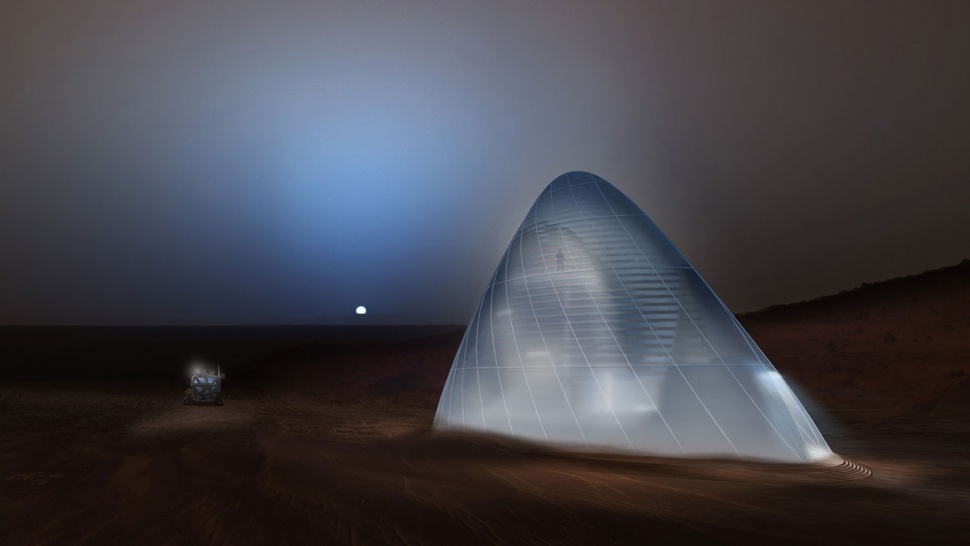- 1. space igloo
- 2. space igloo
- 3. space igloo
- 4. space igloo
- 5. space igloo
- 6. space igloo
- 7. space igloo
- 8. space igloo
- 9. space igloo
- 10. space igloo
- 11. space igloo
- 12. space igloo
- 13. space igloo
- 14. space igloo
- 15. space igloo
- 16. space igloo
An igloo created with indigenous Martian ice was the winner of the 3D Printed Habitat Challenge, a competition sponsored jointly by NASA and America Makes. The finale for the first phase of the challenge was held this weekend in New York as part of the World Maker Faire.
Designed by Search Consortium and Clouds AO, the Mars Ice House is constructed to be technologically sound and also provide a pleasing environment in which to live. The structure is conceptualized as a series of vertical nested domes that are enclosed with ETFE membrane, a polymer that is highly resistant to corrosion. Water in the form of ice was chosen as the primary building material due to its predicted abundance on Mars and other potential extra-terrestrial outposts. Now that water has been discovered on Mars, these 3D printed ice houses take on greater significance and may play an important role in the first manned Mars mission.
The construction and 3D printing process was conceived with efficiency in mind. A lander will touch ground first, creating a crater that can be used without further excavation for igloo construction. Semi-autonomous robots and self-assembling devices will exit the lander and begin constructing the igloo before the astronaut team arrives. The 3D printing process uses in-situ materials found on the planet’s surface, which allows the robots and the astronauts to travel without the need to bring heavy equipment and other materials along with them.
Inside the structure will be hollowed out “ice rooms” that provide a sensation of open space. Because they’re made from ice, light can pass through the semi-translucent walls, allowing astronauts to experience a natural diurnal cycle and enjoy a view of the Martian landscape. There also will be a hydroponic greenhouse for food and oxygen and an interstitial zone that functions as a front yard, allowing astronauts to stroll outside their living quarters with having to wear a bulky EVA suit.
Related: French firm offers NASA plan to build bubble homes on Mars
SEArch Consortium and Clouds AO received a $25,000 prize for their Mars Ice House winning idea, while second place finisher Gamma and third-place Lava Hive were awarded $15,000 and $10,000 respectively. These funds will be used towards the second phase of the competition, which challenges the groups to build a full-scale habitat.
This was originally a post on our brother site, Digital Trends.


















